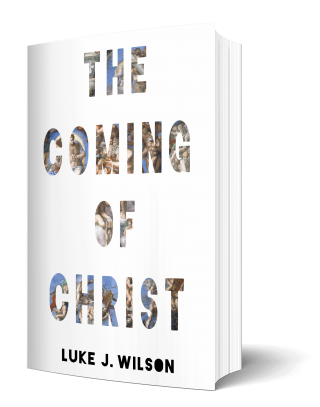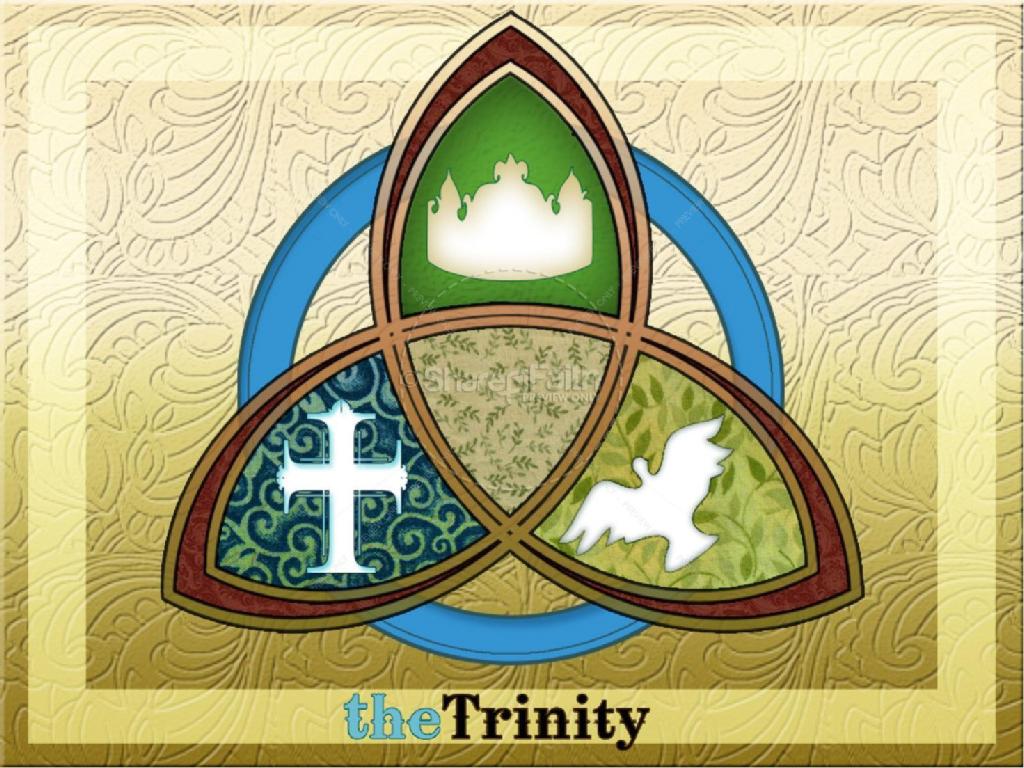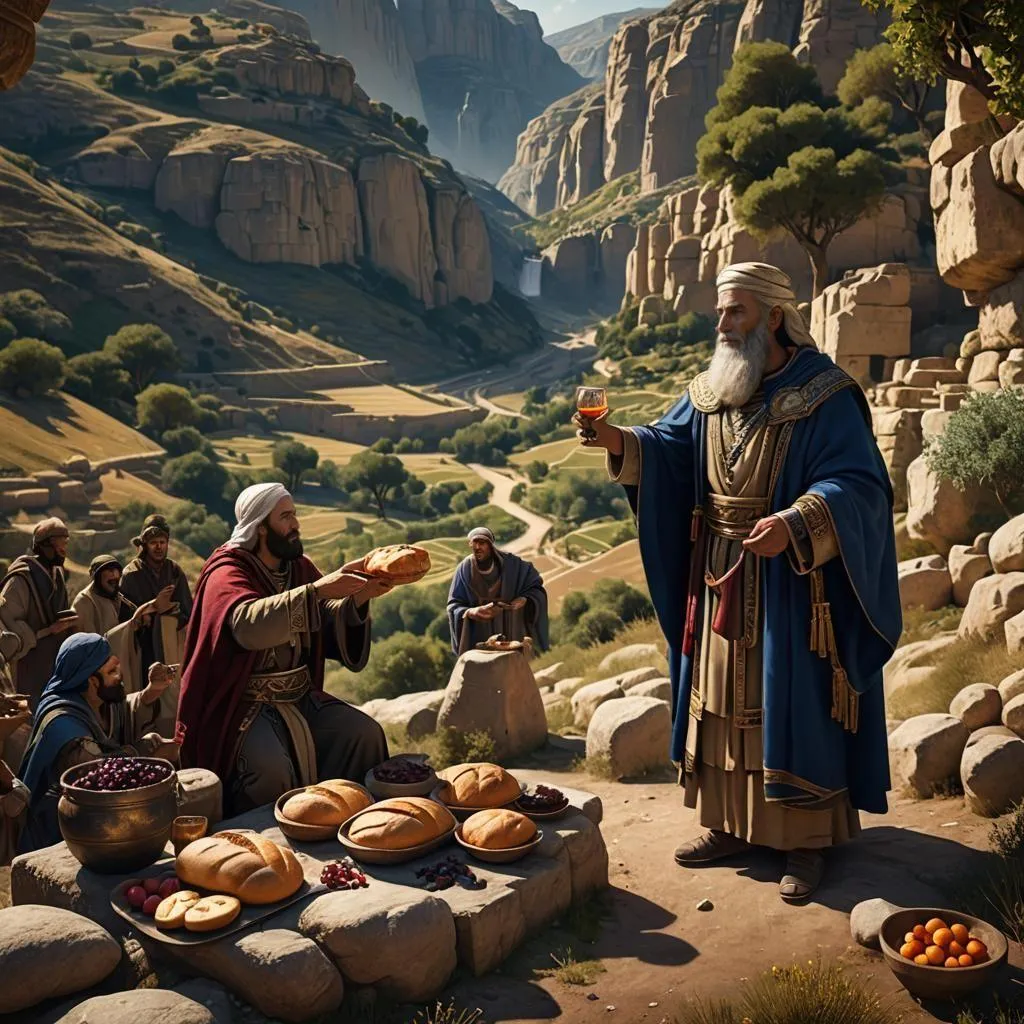Is The Rapture Biblical?

Most people have some idea about what the rapture is – or do they? Generally there is an idea or concept of a form of escapism from the world when Jesus returns, which happens pre, mid or post tribulation and in some connection to the millenium. Now, if you understood any of those terms, you are most likely on, or aware of, the Dispensationalism side of things.
There’s a lot of doctrine all bundled together in “end times” beliefs, and a fair bit of speculation around “the rapture” with its timing and logistics etc. which makes the whole thing a but murky, but nonetheless, it’s pretty much taken for granted as a staple belief within the Evangelical world. But has this always been so, and does it have any biblical basis?
In short: sort of.
What is The Rapture?
This is the primary verse where the doctrine finds its footing:
…then we that are alive, that are left, shall together with them be caught up in the clouds, to meet the Lord in the air: and so shall we ever be with the Lord.
— 1 Thessalonians 4:17
On the face of it, that is a pretty obscure (and short) text, yet so much has been written on and speculated about around this event.
I’m not going to cover every aspect of rapture doctrine here, but rather want to just highlight the context of this verse and its parallels in Paul’s other letters, as this seems to get lost under centuries of doctrinal baggage, which, incidentally, also the leads to the next point to look at: is the rapture biblical?
The origin of The Rapture
The word “rapture” itself comes from the Latin word rapere, which means: “to seize” or “to abduct”. It is a translation from the Greek word that is rendered as “caught up” (ἁρπάζω / harpázō) in our English Bibles today.
For many, asking if this belief is biblical is a non-starter because it is assumed so based on 1 Thess. 4 so obviously it is. But this is a presupposition, reading the modern ideas of what “the rapture” means into the text. The modern idea being that Jesus comes back briefly (and maybe secretly), whooses all the Christians into the sky and takes them to heaven, away from all the troubles on the earth, before coming back later to do a proper “second coming”.
John Nelson Darby, a 19th-century theologian, is often credited with creating this premillennial rapture doctrine, followed closely by C.I. Scofield who wrote a best-selling annotated Bible which promoted Darby’s rapture views in its footnote commentary. This particular Bible became wildly popular across America in the early 1900s and ended up solidifying the futurist dispensational viewpoint for generations to come within Evangelicalism.
Despite the popularity of Scofield’s Bible, what it (and Darby) taught was a novel idea which had not been seen nor heard of before in the previous 1800 years of Church History, yet many Christians accepted it without hesitation, likely due to it being part of the exposition alongside the Scripture they were reading, and therefore a seeming authority.
I realise there is somewhat of an irony here in that I’m acting similarly like an authority telling you that this belief is wrong whereas Scofield was writing as though it were accurate, but in an even more ironic twist, just a handful of verses later, the same letter to the Thessalonians says to “test everything; hold fast to what is good” (1 Thess. 5:21). This is what I would invite you to do: don’t just take my word for it, test everything and see if what I say is accurate.
The context of The Rapture
So what is the context of these verses, if not about being whisked away into the sky with Jesus? A couple of things, but one slightly more obvious than the other, though still overlooked by people, I’ve noticed; the other requires knowing some more about the ancient Greco-Roman culture of the time.
Firstly, we only need go back a few verses to see what Paul is writing about here: he begins the passage in verse 13 by saying that he doesn’t want his readers to be “uninformed” about fellow Christians who have died, so that they “may not grieve as others do who have no hope” (i.e.: unbelievers). The main context here is about death and having hope through Jesus’ resurrection that they also will be resurrected when the time comes. Therefore, do not grieve the death of a loved one as we’ll see them again on that day. It’s a passage of comfort to the Thessalonica church, not one of escapism from “the great tribulation”.
Secondly, then, Paul is speaking of this resurrection event and the hope we should all have in it, using language which not only parallels his other great passage on the resurrection in 1 Cor. 15 (being changed in a “twinkling of an eye”), but also using a contemporary allusion which his readers could relate to, which also hints back to John 14:1-3 where Jesus he will come again to receive us (see also, Jude 14).
To explain this view, N.T. Wright gives a brief overview in the video below (5 minutes): <iframe title="YouTube video player" src="https://www.youtube.com/embed/M9pg9SLpWWY?si=FtfiRC-Dtg7V5SFF&start=336" width="560" height="315" frameborder="0" allow="accelerometer; autoplay; clipboard-write; encrypted-media; gyroscope; picture-in-picture; web-share" allowfullscreen="allowfullscreen"></iframe>
What Wright is talking about here is noted by several Biblical commentaries too. “The expression translated to meet is kind of a technical term 'for the official welcome of a newly arrived dignitary'…and is very suitable in this context.” writes Dr. Leon Morris in the Tyndale New Testament Commentaries. F.F. Bruce's International Bible Commentary, Vine's Expository Dictionary of Old and New Testament Words and The Jamieson, Fausset and Brown Commentary all note the same theme in their notes about this phrase being used of dignitaries coming on official visits and being met by their loyal subjects.
As Wright also notes in his book Jesus And the Victory of God (p.345), “Had Jesus wished to introduce so strange and unJewish an idea to them he would have had a very difficult task.”
Modern rapture theories completely divorce the original context from the text and wrangle in other, new ideas.
This isn’t just something which has been recognised by scholars and commentaries in modern times either, if we go back to the fifth century we can see that the respected early church father, John Chrysostom wrote about this meaning in his commentary on 1 Thess. 4:17.
If he is about to descend, on what account shall we be caught up? For the sake of honour. For when a king drives into a city, those who are in honour go out to meet him; but the condemned await the judge within. And upon the coming of an affectionate father, his children indeed, and those who are worthy to be his children, are taken out in a chariot, that they may see and kiss him; but the housekeepers who have offended him remain within. We are carried upon the chariot of our Father. For he received him up in the clouds, and “we shall be caught up in the clouds.” Do you see how great is the honour? And as he descends, we go forth to meet him, and, what is more blessed than all, so shall we be with him.
– John Chrysostom (~ AD 407)
Conclusion about The Rapture
So while the concept of “the rapture” and of the Church being “caught up” to meet Jesus in the air has always existed in Christian thought and theology, the underlying meaning of those terms hasn’t been the same as the last 100 years or so.
So let's recap 1 Thess. 4 for clarity's sake:
- Jesus descends from heaven with “a cry of command, with the archangel’s call and with the sound of God’s trumpet” (v.16) – something which sounds very loud and obvious, and not in any way secret as some rapture theories suggest.
- Once this happens, “the dead in Christ will rise first” and then those who are still alive will be “caught up” to meet Jesus. This is part of the comfort and hope Paul was giving the Thessalonians in that whether dead or alive, none would be left out of the glorious return of Jesus.
- This also parallels 1 Cor. 15: 51-55, where Paul says that “we will not all die”, but that we will all be changed “in the twinkling of an eye, at the last trumpet”. This trumpet blast is when “the dead will be raised imperishable” and we are all changed from mortal to imperishable.
- So we have the trumpet blast in both passages, and Jesus coming and all the believers, whether dead or alive, being resurrected and changed. This event is also mentioned in Jude 14 as the Lord coming “with ten thousands of his holy ones”.
- Piecing it all together, along with the historical context of what it means “to meet” royalty in the ancient world, it becomes clear that this is all speaking of the same event of Jesus’ second coming and the first resurrection of the saints, who rule with him in the Kingdom of God on earth – not in heaven or away from everything, but as “priests of God and of Christ … with him a thousand years.” (Rev 20:6).
Whatever your views about the “millennial reign” and how that looks, the context here is all within that framework of Christ coming, the saints rising and then ruling with him as he returns to earth. It leaves no room for the modern rapture doctrine of escaping to heaven with Jesus and avoiding coming to earth immediately without the resurrection involved.
I hope this has served to illuminate some of the issues with “the rapture” and has pointed you towards a more biblical view of the return of Jesus.
 If you’re interested in learning more about this topic, sign up to be notified about my new book, The Coming of Christ, which will look at this topic and more when it’s released.
If you’re interested in learning more about this topic, sign up to be notified about my new book, The Coming of Christ, which will look at this topic and more when it’s released.
Further reading and sources:
- https://www.ucg.org/world-news-and-prophecy/the-rapture-a-popular-but-false-doctrine
- https://www.ucg.org/world-news-and-prophecy/the-rapture-is-wrong-the-saints-dont-rise-to-run-away
- https://www.bible.ca/rapture-origin-john-nelson-darby-1830ad.htm
- https://www.biblestudytools.com/commentaries/scofield-reference-notes/1-thessalonians/1-thessalonians-4.html
Leave a comment Like Back to Top Seen 3K times Liked 3 times
Enjoying this content?
Support my work by becoming a patron on Patreon!
By joining, you help fund the time, research, and effort that goes into creating this content — and you’ll also get access to exclusive perks and updates.
Even a small amount per month makes a real difference. Thank you for your support!
Subscribe to Updates
If you enjoyed this, why not subscribe to free email updates and join over 864 subscribers today!
My new book is out now! Order today wherever you get books
Recent Posts
Luke J. Wilson | 19th August 2025 | Fact-Checking
A poetic post has been circulating widely on Facebook, suggesting that our anatomy mirrors various aspects of Scripture. On the surface it sounds inspiring, but when we take time to weigh its claims, two main problems emerge. The viral post circulating on Facebook [Source] First, some of its imagery unintentionally undermines the pre-existence of Christ, as if Jesus only “held the earth together” for the 33 years of His earthly life. Second, it risks reducing the resurrection to something like biological regeneration, as if Jesus simply restarted after three days, instead of being raised in the miraculous power of God. Alongside these theological dangers, many of the scientific claims are overstated or symbolic rather than factual. Let’s go through them one by one. 1. “Jesus died at 33. The human spine has 33 vertebrae. The same structure that holds us up is the same number of years He held this Earth.” The human spine does generally have 33 vertebrae, but that number includes fused bones (the sacrum and coccyx), and not everyone has the same count. Some people have 32 or 34. More importantly, the Bible never says Jesus was exactly 33 when He died — Luke tells us He began His ministry at “about thirty” (Luke 3:23), and we know His public ministry lasted a few years, but His precise age at death is a tradition, not a biblical statement. See my other recent article examining the age of Jesus here. Theologically, the phrase “the same number of years He held this Earth” is problematic. Jesus did not hold the world together only for 33 years. The eternal Word was with God in the beginning (John 1:1–3), and “in Him all things hold together” (Colossians 1:17). Hebrews says He “sustains all things by His powerful word” (Hebrews 1:3). He has always upheld creation, before His incarnation, during His earthly ministry, and after His resurrection. To imply otherwise is to risk undermining the pre-existence of Christ. 2. “We have 12 ribs on each side. 12 disciples. 12 tribes of Israel. God built His design into our bones.” Most people do have 12 pairs of ribs, though some are born with an extra rib, or fewer. The number 12 is certainly biblical: the 12 tribes of Israel (Genesis 49), the 12 apostles (Matthew 10:1–4), and the 12 gates and foundations of the New Jerusalem (Revelation 21). But there’s no biblical connection between rib count and these symbolic twelves. This is a case of poetic association, not design woven into our bones. The only real mention of ribs in Scripture is when Eve is created from one of Adam’s ribs in Genesis 2:21–22, which has often led to the teaching in some churches that men have one less rib than women (contradicting this new claim)! 3. “The vagus nerve runs from your brain to your heart and gut. It calms storms inside the body. It looks just like a cross.” The vagus nerve is real and remarkable. It regulates heart rate, digestion, and helps calm stress, and doctors are even using vagus nerve stimulation as therapy for epilepsy, depression, and inflammation showing it really does “calm storms” in the body. But it does not look like a cross anatomically. The language about “calming storms” may echo the way Jesus calmed the storm on the Sea of Galilee (Mark 4:39), but here again the poetic flourish stretches science (and Scripture) beyond what’s accurate. 4. “Jesus rose on the third day. Science tells us that when you fast for 3 days, your body starts regenerating. Old cells die. New ones are born. Healing begins. Your body literally resurrects itself.” There’s a serious theological problem here. To equate Jesus’ resurrection with a biological “regeneration” after fasting is to misrepresent what actually happened. Fasting can indeed trigger cell renewal and immune repair, but it cannot bring the dead back to life. It’s still a natural process that happens...
Luke J. Wilson | 08th July 2025 | Islam
“We all worship the same God”. Table of Contents 1) Where YHWH and Allah Appear Similar 2) Where Allah’s Character Contradicts YHWH’s Goodness 3) Where Their Revelations Directly Contradict Each Other 4) YHWH’s Love for the Nations vs. Allah’s Commands to Subjugate 5) Can God Be Seen? What the Bible and Qur’an Say 6) Salvation by Grace vs. Salvation by Works Conclusion: Same God? Or Different Revelations? You’ve heard it from politicians, celebrities, and even some pastors. It’s become something of a modern mantra, trying to shoehorn acceptance of other beliefs and blend all religions into one, especially the Abrahamic ones. But what if the Bible and Qur’an tell different stories? Let’s see what their own words reveal so you can judge for yourself. This Tweet recently caused a stir on social media 1) Where YHWH and Allah Appear Similar Many point out that Jews, Christians, and Muslims share a belief in one eternal Creator God. That’s true — up to a point. Both the Bible and Qur’an describe God as powerful, all-knowing, merciful, and more. Here’s a list comparing some of the common shared attributes between YHWH and Allah, with direct citations from both Scriptures: 26 Shared Attributes of YHWH and Allah According to the Bible (NRSV) and the Qur’an Eternal YHWH: “From everlasting to everlasting you are God.” — Psalm 90:2 Allah: “He is the First and the Last…” — Surah 57:3 Creator YHWH: “In the beginning God created the heavens and the earth.” — Genesis 1:1 Allah: “The Originator of the heavens and the earth…” — Surah 2:117 Omnipotent (All-Powerful) YHWH: “Nothing is too hard for you.” — Jeremiah 32:17 Allah: “Allah is over all things competent.” — Surah 2:20 Omniscient (All-Knowing) YHWH: “Even before a word is on my tongue, O LORD, you know it.” — Psalm 139:4 Allah: “He knows what is on the land and in the sea…” — Surah 6:59 Omnipresent (Present Everywhere) YHWH: “Where can I go from your Spirit?” — Psalm 139:7–10 Allah: “He is with you wherever you are.” — Surah 57:4 Holy YHWH: “Holy, holy, holy is the LORD of hosts.” — Isaiah 6:3 Allah: “The Holy One (Al-Quddus).” — Surah 59:23 Just YHWH: “A God of faithfulness and without injustice.” — Deuteronomy 32:4 Allah: “Is not Allah the most just of judges?” — Surah 95:8 Merciful YHWH: “The LORD, merciful and gracious…” — Exodus 34:6 Allah: “The Most Gracious, the Most Merciful.” — Surah 1:1 Compassionate YHWH: “As a father has compassion on his children…” — Psalm 103:13 Allah: “He is the Forgiving, the Affectionate.” — Surah 85:14 Faithful YHWH: “Great is your faithfulness.” — Lamentations 3:22–23 Allah: “Indeed, the promise of Allah is truth.” — Surah 30:60 Unchanging YHWH: “For I the LORD do not change.” — Malachi 3:6 Allah: “None can change His words.” — Surah 6:115 Sovereign YHWH: “The LORD has established his throne in the heavens…” — Psalm 103:19 Allah: “Blessed is He in whose hand is dominion…” — Surah 67:1 Loving YHWH: “God is love.” — 1 John 4:8 Allah: “Indeed, my Lord is Merciful and Affectionate (Al-Wadud).” — Surah 11:90 Forgiving YHWH: “I will not remember your sins.” — Isaiah 43:25 Allah: “Allah forgives all sins…” — Surah 39:53 Wrathful toward evil YHWH: “The LORD is a jealous and avenging God…” — Nahum 1:2 Allah: “For them is a severe punishment.” — Surah 3:4 One/Unique YHWH: “The LORD is one.” — Deuteronomy 6:4 Allah: “Say: He is Allah, One.” — Surah 112:1 Jealous of worship YHWH: “I the LORD your God am a jealous God.” �...
Luke J. Wilson | 05th June 2025 | Blogging
As we commemorated the 500th anniversary of the Protestant Reformation this year, the familiar image of Martin Luther striding up to the church door in Wittenberg — hammer in hand and fire in his eyes — has once again taken centre stage. It’s a compelling picture, etched into the imagination of many. But as is often the case with historical legends, closer scrutiny tells a far more nuanced and thought-provoking story. The Myth of the Door: Was the Hammer Ever Raised? Cambridge Reformation scholar Richard Rex is one among several historians who have challenged the romanticised narrative. “Strangely,” he observes, “there’s almost no solid evidence that Luther actually went and nailed them to the church door that day, and ample reasons to doubt that he did.” Indeed, the first image of Luther hammering up his 95 Theses doesn’t appear until 1697 — over 180 years after the fact. Eric Metaxas, in his recent biography of Luther, echoes Rex’s scepticism. The earliest confirmed action we can confidently attribute to Luther on 31 October 1517 is not an act of public defiance, but the posting of two private letters to bishops. The famous hammer-blow may never have sounded at all. Conflicting Accounts Philip Melanchthon, Luther’s successor and first biographer, adds another layer of complexity. He claimed Luther “publicly affixed” the Theses to the door of All Saints’ Church, but Melanchthon wasn’t even in Wittenberg at the time. Moreover, Luther himself never mentioned posting the Theses publicly, even when recalling the events years later. Instead, he consistently spoke of writing to the bishops, hoping the matter could be addressed internally. At the time, it was common practice for a university disputation to be announced by posting theses on church doors using printed placards. But no Wittenberg-printed copies of the 95 Theses survive. And while university statutes did require notices to be posted on all church doors in the city, Melanchthon refers only to the Castle Church. It’s plausible Luther may have posted the Theses later, perhaps in mid-November — but even that remains uncertain. What we do know is that the Theses were quickly circulated among Wittenberg’s academic elite and, from there, spread throughout the Holy Roman Empire at a remarkable pace. The Real Spark: Ink, Not Iron If there was a true catalyst for the Reformation, it wasn’t a hammer but a printing press. Luther’s Latin theses were swiftly reproduced as pamphlets in Basel, Leipzig, and Nuremberg. Hundreds of copies were printed before the year’s end, and a German translation soon followed, though it may never have been formally published. Within two weeks, Luther’s arguments were being discussed across Germany. The machinery of mass communication — still in its relative infancy — played a pivotal role in what became a theological, political, and social upheaval. The Letters of a Conscientious Pastor Far from the bold revolutionary of popular imagination, Luther appears in 1517 as a pastor deeply troubled by the abuse of indulgences, writing with respectful concern to those in authority. In his letter to Archbishop Albrecht of Mainz, he humbly addresses the archbishop as “Most Illustrious Prince,” and refers to himself as “the dregs of humanity.” “I, the dregs of humanity, have so much boldness that I have dared to think of a letter to the height of your Sublimity,” he writes — hardly the voice of a man trying to pick a fight. From Whisper to Roar Luther’s initial appeal through formal channels was, predictably, ignored. He was advised not to make trouble. But as opposition mounted and corruption remained unchecked, the once quiet reformer grew louder. His theological convictions deepened, and his public persona evolved. The lion did eventually roar — but not on October 31. A Catholic Reformer, Not a Protestant Founder It’s vital to remem...
Luke J. Wilson | 20th May 2025 | Islam
You are not alone. Around the world, many Muslims — people who already believe in one God, pray, and seek to live righteously — are drawn to know more about Jesus (ʿĪsā in Arabic). Some have heard He is more than a prophet. Some have sensed His presence in a dream or vision. And some simply long to know God more deeply, personally, and truly. So what does it mean to become a Christian? And how can you take that step? This guide is for you. 1. What Christians Believe About God and Jesus ➤ One God, Eternal and Good Christians believe in one God — the same Creator known to Abraham, Moses, and the prophets. But we also believe God is more personal and relational than many realise. In His love, He has revealed Himself as Father, Son (Jesus), and Holy Spirit — not three gods, but one God in three persons. ➤ Jesus Is More Than a Prophet Muslims honour Jesus as a great prophet, born of the virgin Mary. Christians also affirm this — but go further. The Bible teaches that Jesus is the Word of God (Kalimat Allāh), who became flesh to live among us. He performed miracles, healed the sick, raised the dead — and lived without sin.Jesus came not just to teach but to save — to bring us back to God by bearing our sins and rising again in victory over death. 2. Why Do We Need Saving? ➤ The Problem: Sin All people — no matter their religion — struggle with sin. We lie, get angry, feel jealous, act selfishly, or fail to love God fully. The Bible says: “All have sinned and fall short of the glory of God.” (Romans 3:23) Sin separates us from God. And no matter how many good deeds we do, we can never make ourselves perfect or holy before Him. ➤ The Solution: Jesus Because God loves us, He did not leave us in our sin. He sent Jesus, His eternal Word, to live as one of us. Jesus died willingly, offering His life as a sacrifice for our sins, then rose again on the third day. “But God proves his love for us in that while we still were sinners Christ died for us.” (Romans 5:8) 3. How Do I Become a Christian? Becoming a Christian is not about joining a Western religion. It’s about entering a relationship with God through faith in Jesus Christ. Here is what the Bible says: ✝️ 1. Believe in Jesus Believe that Jesus is the Son of God, that He died for your sins, and that He rose again. “If you confess with your lips that Jesus is Lord and believe in your heart that God raised him from the dead, you will be saved.” (Romans 10:9) 💔 2. Repent of Your Sins Turn away from sin and ask God to forgive you. This is called repentance. It means being truly sorry and choosing a new way. “Repent therefore, and turn to God so that your sins may be wiped out.” (Acts 3:19) 💧 3. Be Baptised Jesus commands His followers to be baptised in water as a sign of their new life. Baptism represents washing away your old life and rising into a new one with Jesus. “Repent and be baptised every one of you in the name of Jesus Christ so that your sins may be forgiven.” (Acts 2:38) 🕊️ 4. Receive the Holy Spirit When you believe in Jesus, God gives you the Holy Spirit to live within you, guiding you, comforting you, and helping you follow His will. “You received the Spirit of adoption, by whom we cry, ‘Abba! Father!’” (Romans 8:15) 🧎 5. Begin a New Life As a Christian, you are born again — spiritually renewed. You begin to grow in faith, love, and holiness. You read the Bible, pray, fast, and gather with other believers. Your life is no longer your own; you now live for God. 4. What Does a Christian Life Look Like? Jesus said: “If anyone wants to become my followers, let them deny themselves and take up their cross and follow me.” (Matthew 16:24) This means: Loving God with all your heart Loving your neighbour — even your enemies Forgiving others ...














